
Image Credit München Tourismus
To the uninformed, Oktoberfest may be nothing more than a time of year when Germans get together while wearing odd costumes and drinking beer. That misperception is far from the truth of what Oktoberfest really is. It is a celebration of Bavarian culture and tradition and the love of what it means to be German. The home of Oktoberfest is Munich and to fully appreciate the richness of the tradition, one must go there and experience it in person.
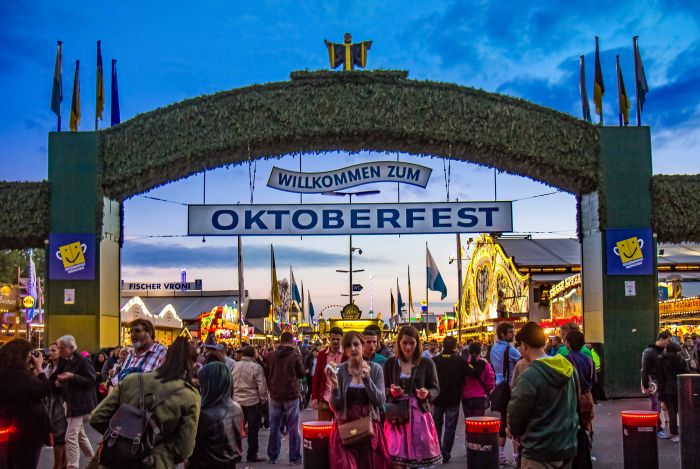
Oktoberfest is the world’s largest beer festival. For about 16 days each fall, it is the ultimate celebration of Bavarian culture and attracts over six million people from Germany and around the world. It is so much more than beer and pretzels. There are tents galore as well as festival grounds and walking streets with all manner of food and carnival rides. This is the world’s grandest beer extravaganza and celebration of tradition, culture, and, of course, some really good beer.
Oktoberfest actually begins in September and ends during the first week of October. Although Germany is home to Oktoberfest there are festivals throughout the world with major events taking place in Brazil, Canada, Japan, and China as well. You’ll also find Oktoberfest celebrations throughout Germany with the larger events held in Stuttgart, Berlin, and Cologne. The home of Oktoberfest is in Theresienwiese, a sprawling 100-acre festival ground in the heart of Munich.
History and Culture
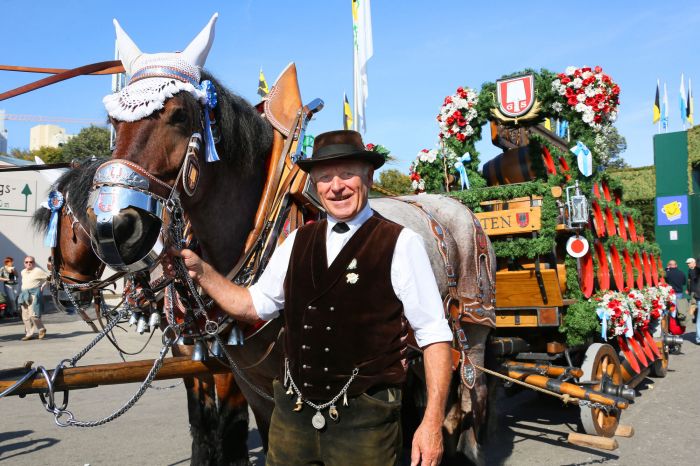
The history of Oktoberfest in Munich dates back to 1810 when the first celebration took place. It was originally held to commemorate the marriage of Crown Prince Ludwig (who would later become King Ludwig I) to Princess Therese of Saxony-Hildburghausen on October 12th. The citizens of Munich were invited to join in the festivities, which included horse races and various forms of entertainment.
Due to its immense popularity, the event was repeated in the following years, gradually evolving into an annual tradition. Over time, more attractions were added, including beer stands, carnival games, and food vendors. The horse races eventually gave way to the iconic beer tents and halls that we associate with Oktoberfest today.

credit: sebastian lehner
A distinctive aspect of Oktoberfest is the attire, with festivalgoers donning the iconic clothing. For men, the quintessential outfit is the ‘lederhosen.’ These knee-length leather shorts are often accompanied by suspenders, a checkered shirt, knee-length socks, and sturdy leather shoes.

credit: Sophia Lights
Women, on the other hand, don the charming ‘Dirndl’ dresses. These dresses typically consist of a bodice, blouse, full skirt, and apron. The dirndl accentuates the feminine silhouette and is often paired with traditional ‘Haferlschuhe’ or lace-up shoes. Both attire choices not only pay homage to Bavarian heritage but also add to the festive ambiance of Oktoberfest.
Carnival Atmosphere

From around the world, millions pass the gates to enter Oktoberfest. The location is at Theresienwiese, often referred to simply as the ‘Wiesn’, a humungous carnival spread out over 100 acres. There are no entrance fees and there are walking streets lined with stalls lined up selling food and souvenirs and then you’ll see the tents with one more elaborate than the next. This is a carnival of sorts with all kinds of rides for kids of all ages from giant amusement rides, ferris wheels, bumper cars, fairground games and a petting zoo.
Really Good Beer

Oktoberfest is after all, at its core, a festival to celebrate beer. And for those two and a half weeks each fall in Munich, there definitely is a lot of beer imbibed with estimates of 5-7 million liters consumed. But not all beer is made alike and it is important to understand the differences as well as what to expect when partaking in this golden brew during Oktoberfest.
The first thing to understand is that Oktoberfest in Munich is not the place to go and to order a Bud or Heineken. You won’t find that anywhere and with good reason. Oktoberfest is a celebration of beer but not any beer. It is a celebration of Bavarian beer and only the six large producers of beer in Munich are licensed to supply the festival. The ‘Big Six’ breweries are Augustiner, Hacker-Pschorr, Hofbräu, Löwenbräu, Paulaner and Spaten. Beyond beer, you will find other spirits and wine as well but the beer is exclusive to local producers.

For several reasons, the beer is really good in Oktoberfest in Munich. Producers follow a strict code of production and certify that the beer is ‘pure’; containing only water, barley, hops, yeast, wheat malt, and/or cane sugar. The type of beer is a Märzen style of beer, brewed in March and aged until the festival, and is known for its amber hues, balanced maltiness, and crisp finish. The beer comes in a “hirsche” or traditional wooden barrels with a capacity of 200 liters. Wooden barrels make the beer actually better, less harsh, and, better tasting with less carbon dioxide than beer in steel kegs. This is just part of the reason that beer just tastes better in Germany.
Beer is served in the traditional one-liter glass mugs known as ‘Masskrugs’. During the festival, Festbier is the style of beer served which is very easy to drink but one must be cautious as this beer is deceptively high in alcohol at 6%. As a result, chugging beer during Oktoberfest is forbidden and will be sternly stopped should it be spotted in the beer tents. One can order Schaumige which is with a heavy foam meaning it’s less liquid and 1/3 foam and 2/3rds liquid. Another option for those who wish for a lighter style of beer is Radlers which is beer mixed with a Sprite-type soda to create a type of shandy.

At each of the tents, you’ll see the men and women servers dashing to and fro loaded down with a clutch of full or empty mugs. With a herculean feat of strength, many of these beer heroes can hoist 12 of these heavy glass steins at a time to bring to an awaiting table. It’s really quite a sight to see, especially when smallish women have such a massive load of liquid and deftly bring it to their thirsty patrons.

Although throughout the festival attendees will drink millions of liters of beer, Oktoberfest is so much more than these mugs of golden ale. One of the hallmarks of Bavarian culture on display at the Oktoberfest is the emphasis on hearty and delicious cuisine. Traditional Bavarian dishes, such as pretzels, sausages, schnitzel, and roast chicken, are prepared with care and served in generous portions as well.
The Beer Gardens and Tents of Munich Oktoberfest

One thing you need to know about Oktoberfest Munich is that you don’t need to go into a tent to have a beer. Most of the tents have beer gardens which are outdoor areas where anyone can go assuming they can find a seat. There you’ll see friends and families gathering at the long tables. Here you’ll find a communal atmosphere that encourages strangers to become friends over mugs of beer.

Be that as it may, the most fun action takes place inside the tents. The more popular tent can be a challenge to get into, especially on the weekend when you’ll see droves of people jockeying for position to get in, many of whom may often wait for hours. So it’s best to get your friends together early and make reservations for the tent of your choosing. Typically, there is no cost for the table or entrance but there is a minimum spend per person required to enter the tents.

What is mindboggling about these massive tents, with their elaborate décor, construction, and interiors is that they are not permanent structures. After each Oktoberfest, they are torn down to the foundation as the owners can change or the 100-acre layout may be rearranged. Then each spring once the new layout plans and stand owners are contracted, the construction crews go to work to build the tents again from the ground up.

Oktoberfest is all week long and during the week the atmosphere is more laid back. In fact, many companies will entertain their international clients mid-week. But the weekends are ram with attendees coming from across Germany and around the world. The tents normally open around 11 am and the energy is hyped up and culminates in a full-on over-the-top party.

And not all tents are the same. They range in size, design, and décor. Some cater to masses and youth with a boisterous and spirited atmosphere. While others are more relaxed and chilled out and target a more sophisticated guest. The larger tents can hold 10,000 people and once inside the party is full on with dancing at the tables, singing along with popular songs, and of course drinking and eating. Tents have extremely talented bands playing live that really get the crowd moving with German and well-known pop songs. You’ll definitely hear 99 Luftballons a few times during your visit.

At the more traditional tents, the entertainment is provided by lively oompah bands who provide the soundtrack for dancing and revelry with authentic Bavarian music featuring polkas, waltzes, and folk songs. When everyone is singing, drinking, and enjoying themselves, that is when you understand the spirit and true meaning of Oktoberfest which is camaraderie, music, and merriment.
Ammer Oktoberfest Experience

A trip to Oktoberfest requires more than just one day so it’s best to spend a few days there or a few weekends. During your visit, you’ll want to experience one of the traditional tents which are often smaller than the mega tents. A good one to experience is the Ammer Tent.
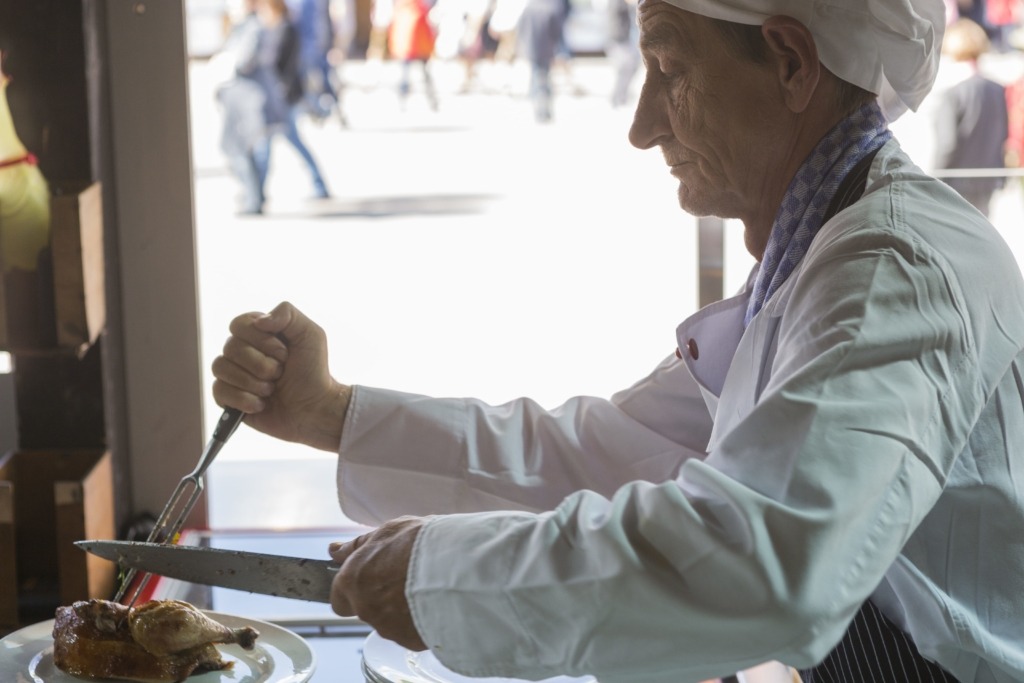
It’s fascinating to know that this tent first welcomed guests almost 140 years ago in 1885. You’ll instantly notice the tent and its marquis with giant-sized animated figures turning chicken on a roast. You’ll also smell the aroma from far away as well. This tent is known for its mouth-watering roasted chicken and so much more. You’ll also see the line of patrons out front waiting in line for take-away and the bustling kitchen filling the awaiting orders. Part of what makes the food so delicious is that the poultry is certified organic and they only serve the highest quality meats and produce. Beyond that, it’s just delicious with its seasoning and cooking techniques that have been perfected over a century.

AMMER is in fact the world’s oldest chicken roastery and is today run by Josef Schmidbauer, the fifth generation of the family who has owned the tent. You’ll see him dashing about making sure all is working in order but mainly you’ll see him in the kitchen, dressed in his chef’s coat and hat, talking with guests as he carves up the juicy chicken from the spit, clinging the bell each time a new spit of chickens is needed. The family legacy is in good condition as this is a family affair with his daughters working each day alongside Josef and preparing to carry on the family business.
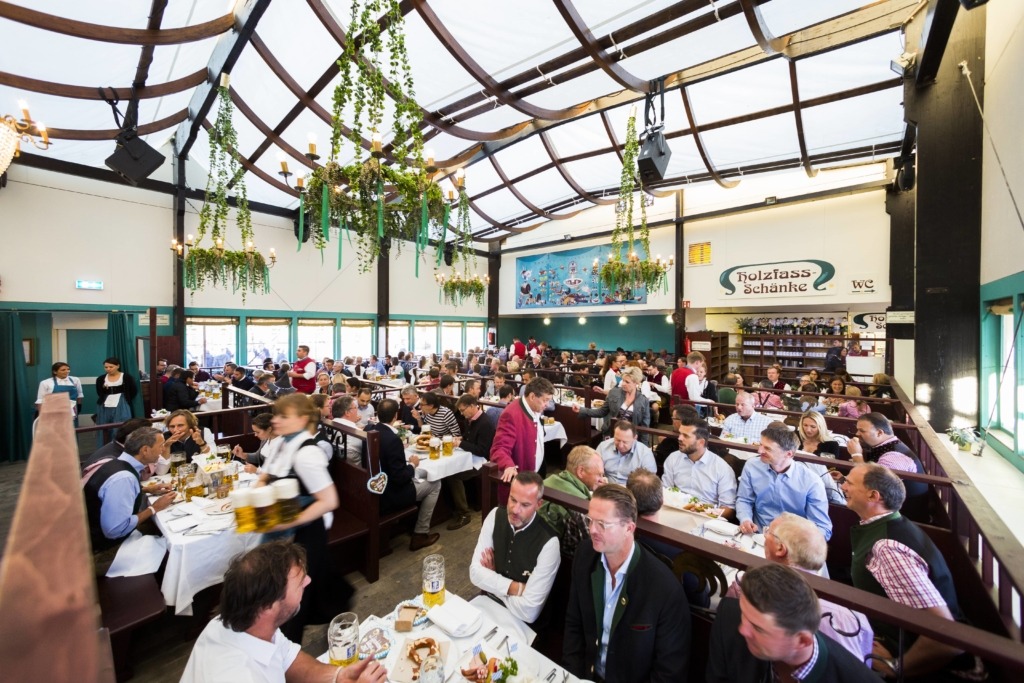
Beyond lines at the takeaway window, you’ll find the beer garden packed with guests so you’ll be lucky to get a seat on the weekend. Indoors is just as delicious as the cuisine with a traditional tent adorned with a traditional Bavarian design, chandeliers, and large photos depicting scenes from the early times of Oktoberfest. This is an intimate tent and hosts 500 patrons indoors. They come for the good food and fun environment with music played by talented performers.
The Folksingers Tent

There is one part of the Wiesn that is separate from the rest of the festival. This is the Oide Wiesn, or Old Oktoberfest, and offers a journey into the festival’s historical roots. It began in 2010 to honor the 200thanniversary of Oktoberfest and sought to recreate the festival’s early days with traditional games, brass bands, traditional folk songs, and even beer prices from the past. It was so popular that the organizers decided to make it an ongoing event and today you’ll find a collection of vintage rides and amusements along as well as folk performances. There is a fee of about $5.00 to enter which subsidizes the rates of the rides the other unique experiences and activities provided.
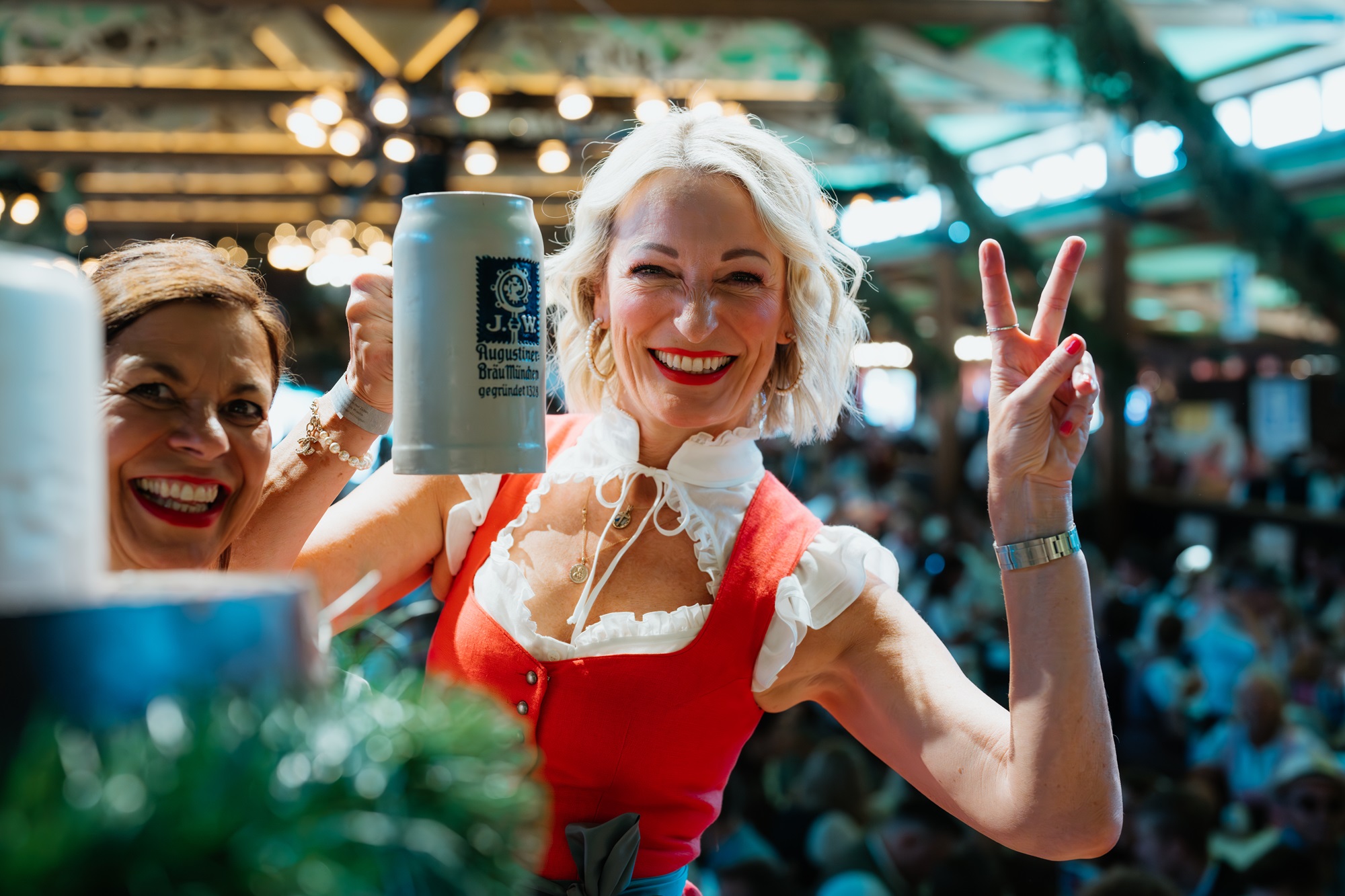
Within the Old Weisn, you’ll find a selection of tents that focus on the historical cultural experiences of the past. They are typically smaller and less crowded than the contemporary Theisen area. One tent that must be visited is the Vokssängerzelt Schützenlist tent or, as it is known in English, the Folksinger’s Tent.
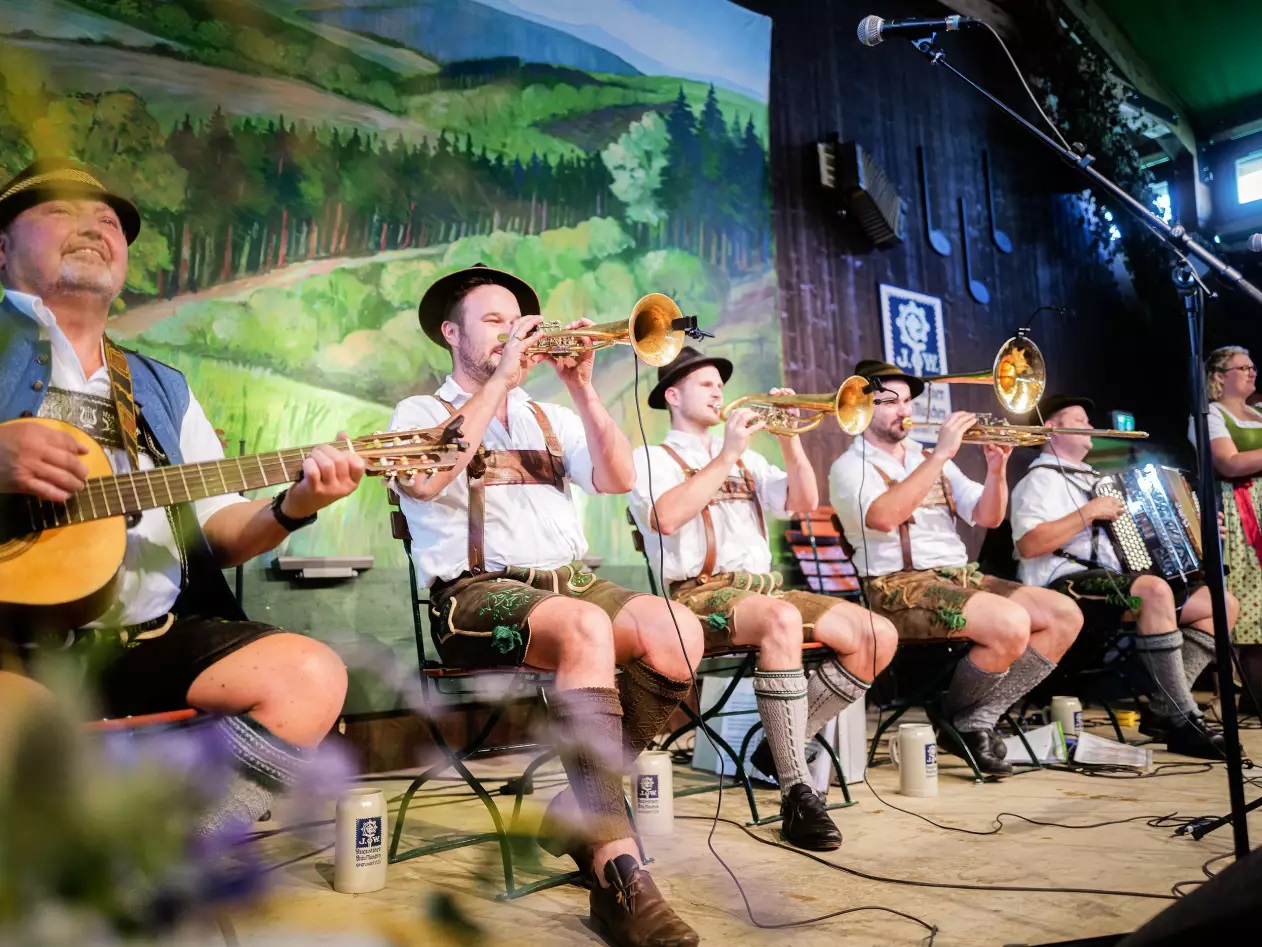
There’s no better place to take in the history and culture of Bavaria than in the Folksinger’s Tent. The tent is known for its lively traditional Bavarian music with a 10-piece brass band with clarinets, trumpets, and tubas blaring is a treat to see and hear. Beyond that, the talented singers belt out classic inn songs as well as waltzes and polkas. Before long, the entire hall sings along whether they know the words or not, it’s just too much fun and excitement to not want to be a part of it. As the energy in the room rises, guests begin dancing at their tables and then join in with the line of revelers dancing around the tent.

A visit to Folksingers tent is incomplete without indulging in the mouthwatering Bavarian cuisine it offers. The tent’s menu offers an authentic taste of Bavaria that flawlessly pairs with the tent’s beer. This feast for the taste buds includes sizzling sausages, succulent roast chicken, crispy schnitzel, roast pork, boiled beef, or fillet of ox, you’ll find a variety of Bavarian specialties to choose from.
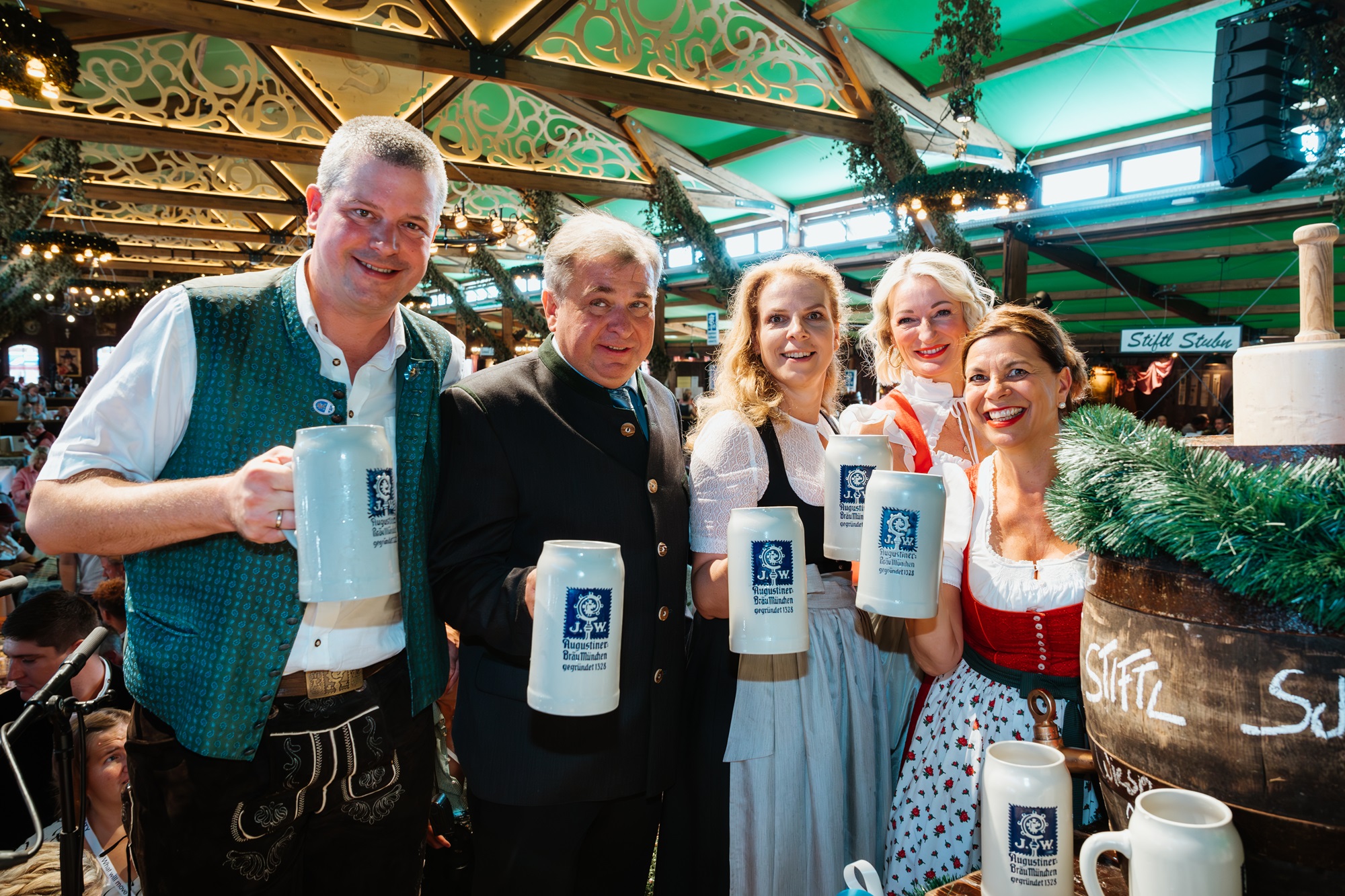
The tent is 27,000 square feet and hosts 1500 people inside with another 400 in the beer garden. It is run by its consummate hosts, Christine and Lorenz Stiftl, who know a bit about hosting events and catering their delicious cuisine and have been hosts at Oktoberfest for 21 years. It is quite the operation with a massive kitchen that is a flurry of activity with roasters on one section and friers and ovens in another producing a mountain of food each day to feed the awaiting crowds. It takes an army to run the operation with a staff of 60 people with most returning year after year. After seeing the incredible venue, it’s fascinating to know that each season the entire facility needs to be built again from the ground up.

Oktoberfest Munich is a national treasure that encapsulates the very essence of Bavarian culture. The atmosphere of comradery and merriment is as palatable as the delicious food and bountiful beer. Here, attendees celebrate the rich heritage of Bavaria in a carnival-like atmosphere. From the fresh air, good vibes, and food and drink in the beer gardens to the tents where the revelry is ratcheted up to the next level with lively bands and non-stop dancing and singing. Oktoberfest Munich is more than a beer festival, it is an unforgettable immersion into Bavaria’s most cherished traditions. Prost!


:max_bytes(150000):strip_icc()/Health-GettyImages-2190548475-32f16dd1c0b0453f9de5c8c766097399.jpg)

